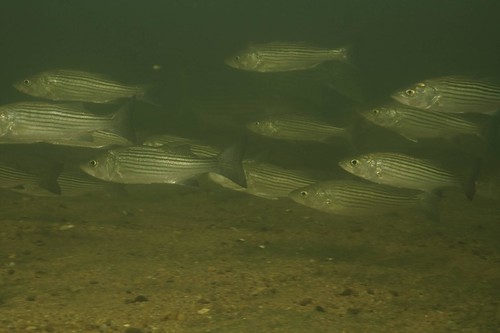If you spend enough time hanging around seasoned commercial or sport fishermen, you’ll often hear that it’s impossible to figure out why finfish and blue crabs are in certain places at certain times.
These thoughts came to mind this week as I spoke to some of the most respected captains on the Chesapeake about how this season’s fishing is shaping up. There is not enough space to share all of the classic statements, but many captains repeated the two that I have heard throughout my life on the water: “No two years are the same,” and “Just when you think you have them figured out, they make a fool of you.”
The use of circle hooks when chumming for striped bass is slowly gaining acceptance, but we understand it’s not an easy transition for many, due to the instinct of trying to set the hook when a fish picks up a bait.
Studies at the Oxford Lab in the 1990s showed that circle hooks in the 9/0, 10/0 size range gave the best results in preventing deep hooking of 17 to 20-inch striped bass. Deep hooking did occur with circle hooks in the 4/0, 6/0 size range. Also there are a lot of different circle hook designs out there and some of them tend to look like a hybrid. The point of the hook should be pointing perpendicular to the shank of the hook.
These thoughts came to mind this week as I spoke to some of the most respected captains on the Chesapeake about how this season’s fishing is shaping up. There is not enough space to share all of the classic statements, but many captains repeated the two that I have heard throughout my life on the water: “No two years are the same,” and “Just when you think you have them figured out, they make a fool of you.”
The use of circle hooks when chumming for striped bass is slowly gaining acceptance, but we understand it’s not an easy transition for many, due to the instinct of trying to set the hook when a fish picks up a bait.
Studies at the Oxford Lab in the 1990s showed that circle hooks in the 9/0, 10/0 size range gave the best results in preventing deep hooking of 17 to 20-inch striped bass. Deep hooking did occur with circle hooks in the 4/0, 6/0 size range. Also there are a lot of different circle hook designs out there and some of them tend to look like a hybrid. The point of the hook should be pointing perpendicular to the shank of the hook.
One last item is that many captains have learned to snell their circle hooks to the leader to ensure a straight pull, which seems to help a lot with the hook engaging the side of the mouth properly. Anglers will also learn the best ways of placing the circle hook in a bait by experience, and when live liningalways remember when a fish is swallowing a prey fish they swallow it head first, so try hooking your live bait more toward the tail end.


2 comments:
I learned something new!
Who the hell wrote this? "when a fish is swallowing a prey fish they swallow it head first, so try hooking your live bait more toward the tail end."
That's absurd. The would never get to eat if they had to get in front of a fish and charge it directly in its field of vision to eat it. No, they all come from behind a fish to eat it, or they can eat it whole from any direction if the predator fish is big enough. Most of the time it is the element of surprise that allows them to capture and eat prey. The only reason to hook the live bait towards the tail, is the mistaken belief that the bait will have more freedom to swim around, therefore look more natural. The professionals (charterboat captains and their mates) will hook the spot through the top of their live bait backs. I've never seen a professional, and I've been on quite a few charter trips, hook the live bait near the tail. Au contraire, they advise not to do that, if the guest is baiting his own hook.
Post a Comment